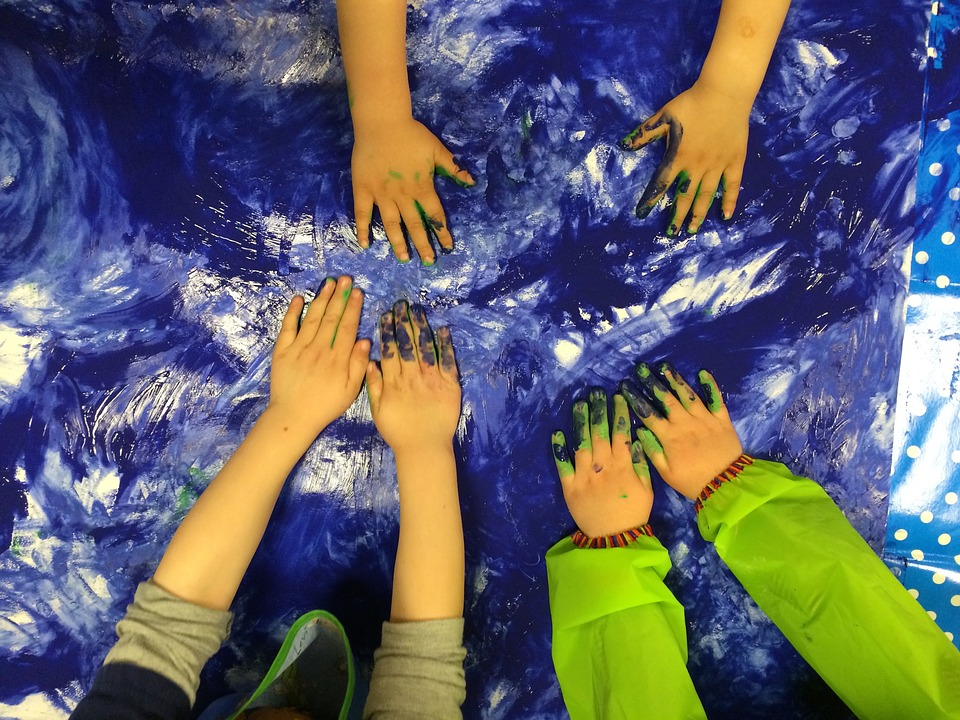Supporting children’s Speech Development
Creative play can support and enhance a child’s speech and language development. There are two areas of creative development; expressive arts and imaginative play. Activities that promote these can also support a child in developing listening and attention skills; whilst building and using language.
Here are 5 creative play activities to support speech development
Listening walks
Listening walks are a great way to encourage listening and attention skills. You should encourage the children to listen for sounds in the environment such as cars or birds, can they guess what sound that is? To extend this activity you can help the children make some listening ears to wear on the walk using card or paper. Some large ears can be decorated and attached to a head band, reminding the children what they should be doing on the walk.
Large scale painting
Painting is a great way for the children to develop language and talk about what they are doing; however painting is more of an individual activity limiting the interaction. Painting on a large scale allows for more interaction with peers and for ideas to extend as children share the area for painting. Rolls of wallpaper or fax papers are a great way for children to access an area to paint with their friends. This creative play enables children to have conversations with others and share their ideas.
Musical instruments
Musical instruments are a great way to develop children’s communication development. Instruments can be used in small games to encourage listening and attention skills, whilst building relationships with peers. ‘Bears like honey’ is a great listening game to play with a group of children. One child plays the ‘bear’ and lies in the middle of a circle covering their eyes. The other children in the circle sing this song;
“Isn’t it funny how a bear likes honey,
Buzz buzz buzz, I wonder why he does?
Go to sleep Mr bear, don’t peak”
All the children will then put their hands behind their back. One child will then shake some bells behind their back. The ‘bear’ must then jump up and listen for the bells, trying to guess who has them. This encourages children to focus their listening skills in order to find the hidden bells.
Role play
Role play opportunities are a great way to extend a child’s language skills through creative play as well as supporting speech development. Creating scenarios for children to explore and build on helps them to develop imaginative skills alongside good communication. Practitioners can offer a handful of open ended resources to encourage thinking skills and support children in communicating their ideas. Mud kitchens are a great way to offer role play situations that enable the child to have full control over their play. This can encourage them to use a breadth of language and interact with others through creative play.
Action stories
Action stories are an easy way to build language and imagination without any resources or props. Simply retell a story or create your own and use gestures to act out the actions. You can create stories around any daily activities such as going to the park or make them creative by planning a trip to the moon. Talk to the children about what you need to do next such as “I need to get dressed then I need to pack my bag”, encourage the children to imitate putting on clothes and packing a bag. Action stories allow children to use their gestures to act out the story and develop simple language.

